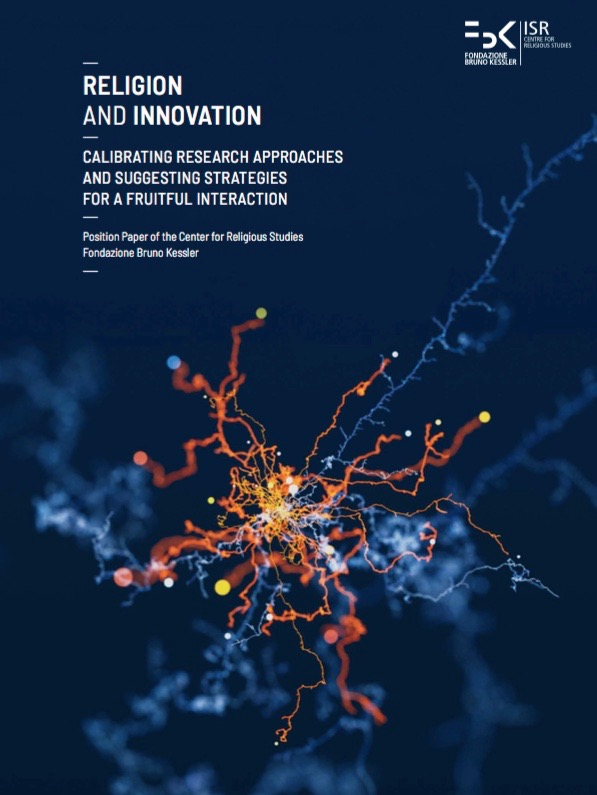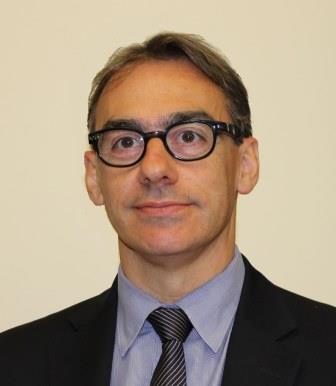Religion is often conceived as something static, rigid, and resistant to innovation. But a new position paper published by the Center for Religious Studies at Fondazione Bruno Kessler in Trento, Italy puts forward a vision for research on how religions are internally innovative and contribute to—and are impacted by—the broader social and technological innovation around them.
Religion & Diplomacy had the chance to discuss the paper—Religion and Innovation: Calibrating Research Approaches and Suggesting Strategies for a Fruitful Interaction—with the director of the center Prof Marco Ventura, an expert in religion and law. What follows is a transcript of our email conversation.
 Religion & Diplomacy: The paper outlines three interrelated frameworks for understanding the interplay between religion and innovation: religion in innovation, innovation in religion, and religion of innovation. Tell us about each of those three.
Religion & Diplomacy: The paper outlines three interrelated frameworks for understanding the interplay between religion and innovation: religion in innovation, innovation in religion, and religion of innovation. Tell us about each of those three.
Marco Ventura: We begin with ‘innovation in religion’. By this formula we mean how innovation is understood, experienced, and practised within religious traditions and communities of religion or belief. This includes innovation strictly understood, such as social innovation, or technological innovation, but also the process of change, transformation, conversion, renewal, and reform. In particular we take an interest in how communities draw the line between immutability and change, desirable and undesirable change, and how they frame the relevant language and concepts.
From here we move to ‘religion in innovation’ where our question is: how do religious traditions and communities of faith or belief contribute to innovation in the areas of culture and society, science and technology, politics and the law? The answer depends on which religion and which innovation are observed or mobilized. It also depends on how the religious faith and the faith in innovation combine.
We realize at this point that the challenge with innovation rests in its potential to develop as a faith in itself, and as a faith which can be more or less compatible with other faiths. Hence our interest for the vocabulary of innovation as a rhetorical vehicle for quasi-religious discourses, and for innovation turning into a belief system and becoming a sort of religion. We define this dimension ‘the religion of innovation’. It is the last of the three that make for our triangular, ‘3D’ vision of religion and innovation.
R&D: You start the paper with an interesting argument: freedom of religion or belief (FoRB) is essential not just as a human right but also because it enables religious communities to help shape the conditions necessary for the innovation needed to achieve sustainable development. Why start there?
Ventura: We all feel a special responsibility in this time of the history of mankind. Sustainable development is nothing but the encapsulation of the sense of purpose and direction humanity needs to share. Innovation and religion have both been acknowledged as seminal in this endeavour. Both our founded upon freedom. Both depend on freedom to flourish. As we explore how the two freedoms can better combine, and walk side by side in the same direction, we are not detracting anything from freedom of religion or belief as an inherent liberty, the worth of which cannot be made dependent from its utility. We are just broadening its scope, and making its heart beating more strongly.
R&D: Relatedly, there has been much debate about the relationship between FoRB and economic development—and whether the relationship is one of correlation or causation—and if causation, which way the causal arrow goes. How will your research on religion and innovation help to clarify, broaden, or problematize that debate?

Prof Marco Ventura. Photo credit: ACLARS
Ventura: Research findings are open to different interpretations on both correlation and causation. Before applying to religious freedom, this applies to religion more generally. Our focus on innovation can help specify the research question and the very design of research and action aimed at inspiring the debate.
Which kind of innovation is actually conducive to sustainable development (SD), and more precisely to a given SD goal or set of goals? How does religion or belief relate to that, in the perspective of our 3D model? Financial innovation could be a very productive test. Is the financial materiality of the United Nations Sustainable Development Goals as understood in the model developed by professors Robert Eccles and Costanza Consolandi of relevance to religious actors? Could innovative financial management by religious actors contribute to that same model? This is an example of how our work could help reframe the question and invite to the discussion the best specialists.
R&D: One of the main challenges with discussion on religion is that it’s easy to bogged down in definitional debates over “what is religion?” Your report puts forward an understanding of religion that aims to be both “flexible” and “substantive.” What is your working definition?
Ventura: We adopt a broad, non-essentialist, and inclusive understanding of religion, which leaves room for taking new forms of faith, belief, and spirituality, as well as hybridisations of religious traditions and practices, into account. We are fully aware that beliefs, practices, precepts, and identities can combine in many different ways. Official religion or belief and lived religion or belief can differ considerably. We include both in our working definition.
R&D: The paper talks about how “time is needed to tell whether or not a given innovation attempt is ultimately successful, i.e., whether or not it indeed results in an innovation. Research on religion and innovation thus requires a temporal and diachronic perspective.” One challenge here, as it relates to collaboration with government, is that policymakers work with very limited timeframes: election cycles, grant cycles, two-year diplomatic postings, and the like. Are there ways to fruitfully engage with governments on these sorts of analytical projects that require extended time?
Ventura: We understand mobility as key to the process. Actually, mobility is one of our four areas of application. Mobility applies to space as it applies to time. When we integrate religion and innovation, we obviously operate in a given timeframe, hence the necessity to ask two questions. First, how can we involve governments and policymakers in our analysis and decision on the timeframe? Second, if we have little agency or little time, how can we take full advantage of our awareness and effort for a shared decision?
R&D: If I can be a bit self-reflective for a moment, the TPNRD and this Religion & Diplomacy website are expressions of a significant change over the past few decades in how foreign ministries understand and engage with religious communities and faith-based organizations. How does the “religion and innovation” lens help us understand this development?
Ventura: We have the ambition to contribute at two levels. First, at the level of agency and planning. Coordinating religion and innovation implies working for the best balance between planning and designing on the one hand, and the unexpected and the unpredictable on the other. After all, this is what the hand of God is about, as believers know only to well. In this regard, if foreign ministries have raised their standard of awareness of religion, they still need to refine their approach, which is often based on an unrealistic, overly ambitious rationalization of how religion works and how religion can be operated.
Second, in our recommendation number seven, we underline the importance of political and legal innovation. There will not be a meaningful approach to the society of artificial intelligence, if social and cultural innovation and innovation in science and technology do not produce political and legal innovation. This is where the TPNRD and its participating foreign ministries can make the difference.
R&D: We are conducting this interview via the Internet and publishing on the Internet. What can be learned from the interaction between religion and the Internet over the past couple of decades?
Ventura: The community of research on ‘digital religion’, ‘religion online’ and ‘online religion’ has done terrific things. They now need to come to the table of the discussion on the future of research on religion and belief and help us overcome the obstacles inherent in the separation of specialties in the humanities and social sciences and between those and researchers in science and technology. The common research effort on artificial intelligence represents a unique opportunity to bridge researchers and actors for the sake of a free and secure community online.
R&D: The paper urges readers to “avoid unwarranted generalisations.” Are there any warranted generalizations, or generalizable patterns, in how religious communities foster or respond to cultural, scientific, or technological change—or is it always context specific?
Ventura: We do not have an agenda for ‘modernizing backward religion’ and we will endeavor to make this clear to those who believe that defending traditions exclude them from the global effort for innovation-driven sustainable development, as well as to those who believe that the same development does not need resources from communities of religion or belief.
R&D: What are some of the key products from this research initiative that we can look forward to in the years ahead?
Ventura: We aim at having our eleven recommendations inspire individuals, communities, and organizations. We know that we will have little if any control on the process and the outcome, and this is perfectly normal. We accept the unexpected.
At the same time, on our side we are developing a portfolio of projects, possibly to be connected to a broader portfolio of projects from partners. With our institution, Fondazione Bruno Kessler, mobilizing 300 researchers on artificial intelligence, we also plan to test the religion and innovation mission in the forging of the best possible artificial intelligence of the future.